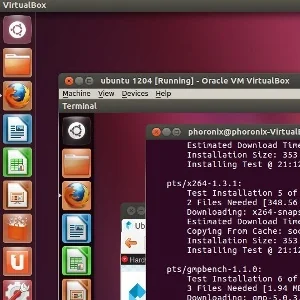QEMU VFIO Support Is Progressing For VGA Pass-Through

With Xen virtualization it's possible to pass graphics cards through to guests and Ubisoft was even playing around with the Xen feature. Coming about more recently has been VFIO-based VGA pass-through for QEMU where a discrete graphics card can be assigned and controlled by the guest virtual machine. This method is different from the virtual GPU methods where the 3D/drawing calls are passed onto the host operating system drivers for rendering but the guest VM has complete (and secure) control of the graphics card.
Besides Virgil3D, another one of the interesting presentations at last month's KVM Forum was a presentation by Red Hat's Alex Williamson on the latest VGA assignment support using VFIO.
The PDF slides cover the VFIO VGA progress at length and provide a nice overview, but overall the current state is some things are beginning to work but there's still quirks and other hardware difficulties to work through with graphics cards not being like conventional PCI adapters that have generally already worked well with Linux VFIO.
There are some AMD Radeon and NVIDIA GeForce graphics cards now in working configurations, the Linux 3.12 kernel features a PCI bus/slot reset interface, and QEMU 1.7 includes VFIO co-assigned device reset, better ROM handling, and coherency/NoSnoop fixes.
In the future the developers working on the task feel they are close to having discrete AMD and NVIDIA GPU support but there are some remaining driver issues with not all host drivers unloading cleanly, the NVIDIA driver having VGA arbiter lock issues, the i915 VGA arbiter being broken, and integrated graphics processors not being supported as well as discrete GPUs.
The benefit of this pass-through model is there aren't special guest virtual GPU drivers to deal with so more operating systems can be supported assuming they have a hardware driver for the given operating system, but as a con you must either have multiple graphics cards or let the guest VM have full control of the graphics card in a full-screen configuration.
Another win for the VFIO graphics card pass-through approach is potentially better performance with having less overhead than a virtual GPU approach. Numbers cited by Alex showed 95%+ performance for accelerated drivers, but poor VGA performance. Windows 7 Experience, Unigine Heaven, and 3DMark 11 benchmarks had good showings for NVIDIA and AMD graphics cards with the NVIDIA K4000 and Radeon HD 7850 GPUs handling the situation better than the GeForce GTX 660.
6 Comments

